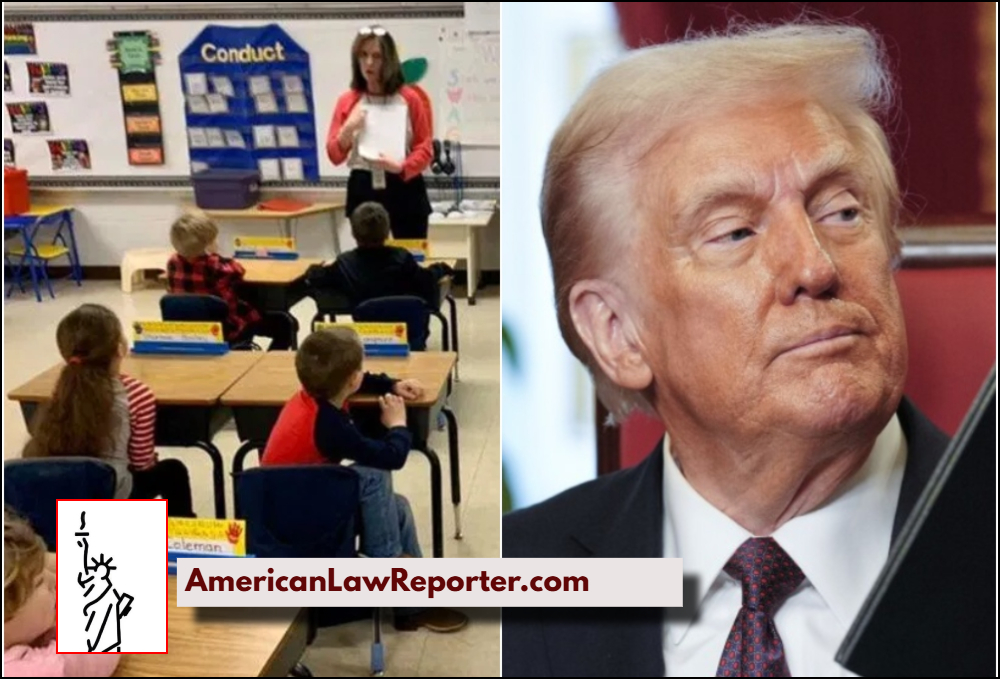On April 23, 2025, President Donald Trump signed an executive order titled “Reinstating Common Sense School Discipline Policies,” sparking widespread debate and confusion about its implications for school discipline, particularly whether it permits teachers to use physical discipline, such as spanking, on students.
Social media platforms like X have amplified concerns, with posts like “I don’t want Trump telling people how to discipline my child” (@CalltoActivism, April 23, 2025, ) reflecting public unease. This article breaks down the executive order’s text, legal context, and potential impact step-by-step to clarify whether it authorizes corporal punishment and what it means for schools, parents, and students.
Step 1: Understanding the Executive Order’s Text
The executive order, published on the White House website, does not explicitly authorize teachers to physically discipline students. Instead, it focuses on revising federal guidance on school discipline to prioritize “common sense” policies and eliminate considerations of racial disparities.
Here are its key provisions:
Rejection of Prior Guidance: The order rescinds Obama-era (2014) and Biden-era guidance that encouraged schools to address racial disparities in discipline, such as higher suspension rates for Black students, under Title VI of the Civil Rights Act of 1964, which prohibits racial discrimination in federally funded programs.
New Guidance Mandate: It directs the Department of Education, led by Secretary Linda McMahon, to issue new discipline guidance within 30 days, ensuring policies are based solely on student behavior, not race, and are “rooted in American values and traditional virtues.”
Report Requirement: Within 120 days, the Education Department must produce a report analyzing past Title VI investigations, the role of nonprofits promoting equity-based discipline, and propose policies to enhance school safety without racial considerations.
Enforcement: The order threatens enforcement actions, such as withholding federal funds, against schools that fail to comply with the new guidance.
The text stresses local control over discipline and criticizes prior policies for allegedly causing “underreporting” of misconduct, leading to classroom disorder.
However, it contains no direct reference to corporal punishment or physical discipline methods.
Read the official text of the full executive order here.
Step 2: Does It Allow Physical Discipline?
The question of physical discipline arises from the order’s vague language and public interpretation. The term “common sense discipline” is not defined, leading to speculation about whether it could encompass corporal punishment, which remains legal in 19 U.S. states, including Maryland, Texas, and Florida, per a WMDT report. In these states, corporal punishment—typically spanking or paddling—is permitted under specific conditions, such as not leaving marks, though policies vary by district.
The executive order does not explicitly permit or encourage physical discipline. However, its emphasis on local autonomy and stricter discipline has raised concerns, as seen in X posts like “Should teachers be able to spank your kids?” (@DougWahl1, April 24, 2025, ). Critics fear that by removing federal oversight on equitable discipline, the order could indirectly enable schools in states allowing corporal punishment to expand its use, particularly if local policies interpret “common sense” as including physical measures.
Legally, the order does not override state laws or local school board policies governing corporal punishment. For example, California bans it (), while Maryland allows it with restrictions (). Any increase in physical discipline would depend on state and local decisions, not a direct federal mandate. The order’s focus is on federal funding compliance under Title VI, not altering state-level discipline statutes.
Watch a WMDT report on Maryland’s corporal punishment policies here for context on state variations.
Step 3: Legal Context and Title VI Implications
Title VI of the Civil Rights Act prohibits racial discrimination in programs receiving federal funding, including public schools. The Obama-era guidance, issued by the Department of Education’s Office for Civil Rights, urged schools to reduce disproportionate suspensions of Black students, who face higher discipline rates (e.g., 3.5 times more likely to be suspended than white students, per 2018 federal data).
The Trump order argues these policies led to “discriminatory” practices by prioritizing racial outcomes over objective behavior, potentially compromising safety.
From a legal perspective, the order’s directive to base discipline solely on behavior aligns with a colorblind approach but risks exacerbating disparities if schools lack oversight. Courts have upheld Title VI’s application to disparate impact cases (e.g., Alexander v. Sandoval, 2001), meaning schools could face lawsuits if new policies disproportionately harm marginalized groups. The order’s report requirement, analyzing past Title VI investigations, suggests potential challenges to prior civil rights enforcement, which could spark litigation.
Multimedia Link: Review the Obama-era guidance at www2.ed.gov/about/offices/list/ocr/letters/colleague-201401-title-vi.pdf for comparison with the new policy.
Step 4: Public and Expert Reactions
Public reaction on X highlights confusion and concern. Supporters, like Tiffany Justice of Moms for Liberty, argue the order “empowers local school boards by encouraging real discipline” (quoted in Education Week, ). Critics, including education scholars cited in The Conversation (), warn it could harm students of color by removing protections against biased discipline.
Posts like “This EO is a step back for equity” (@EdJusticeNow, April 23, 2025, ) reflect fears of increased suspensions and potential for harsher methods like corporal punishment in permissive states.
Experts, such as Renuka Rege from Texas Appleseed, argue punitive discipline fails to address behavioral root causes, citing studies showing corporal punishment increases aggression and mental health issues (Houston Chronicle, ). The order’s lack of clarity on acceptable discipline methods fuels speculation, as seen in X discussions questioning physical punishment.
Multimedia Link: Read expert analysis in The Conversation at www.theconversation.com/trump-school-discipline-order-2025 for scholarly perspectives.
Step 5: Potential Impact on Schools and Students
The executive order’s immediate impact is the issuance of new federal guidance, expected by May 23, 2025, which could shift how schools handle suspensions, expulsions, and classroom management. In states allowing corporal punishment, school boards might interpret the order as a green light to reinforce strict policies, though no federal mandate requires this. The threat of losing federal funding pressures schools to comply, potentially leading to varied implementation across districts.
For students, particularly Black and Latino students, the removal of equity-focused guidance could increase discipline disparities, as federal oversight diminishes. Parents in states like California, where corporal punishment is banned, are less affected, but those in permissive states may face uncertainty. Legal challenges are likely, with civil rights groups potentially suing under Title VI if new policies disproportionately impact marginalized students.
Step 6: Legal Risks and Future Outlook
The order faces several legal risks:
Title VI Violations: If new guidance leads to discriminatory outcomes, schools could face federal lawsuits or investigations, despite the order’s intent to limit such scrutiny.
State Law Conflicts: States with bans on corporal punishment (e.g., California) are unaffected, but permissive states could see policy shifts, prompting local lawsuits over child welfare.
Judicial Review: The Supreme Court’s June 27, 2025, ruling limiting broad injunctions () may restrict courts’ ability to block the order, but targeted challenges could still emerge.
Looking ahead, the Education Department’s report, due by August 21, 2025, will clarify the order’s scope. If it endorses punitive measures without addressing disparities, civil rights litigation is likely. Conversely, clear guidance prohibiting physical discipline could quell concerns about corporal punishment.
Conclusion: No Direct Mandate for Physical Discipline
President Trump’s April 23, 2025, executive order does not explicitly allow teachers to physically discipline students. It focuses on revising federal guidance to prioritize behavior-based discipline and local control, without mentioning corporal punishment.
However, its vague language and emphasis on “common sense” policies have raised fears, particularly in states where corporal punishment is legal, that schools might interpret it as permission for harsher methods.
The order’s legal implications hinge on Title VI compliance and potential disparities, making it a flashpoint for education law debates.
For parents, educators, and readers, the key is monitoring the Education Department’s forthcoming guidance and local school board responses. Those concerned about physical discipline should engage with state education policies, as federal law does not override them. For legal updates, visit www.ed.gov or www.edweek.org.

